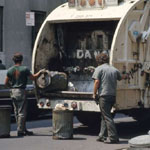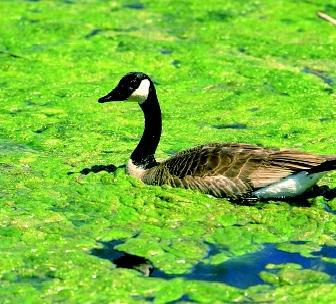Hi I am back. Decided to do this before midnight so as to post by midnight. Anyway, this post will be more on the effects of water pollution. It will mainly be on chemical pollution, while touching a little on thermal pollution.
Chemical PollutionYears passed, chemicals in water do not. Many types of chemicals have gotten into the water bodies and it is not stopping. Chemical water pollution typically occurs because
1.Chemicals were dumped into water
intentionally.
2.Chemicals seeped into water bodies because of broken pipes or spoilt storage tanks.
3.Chemicals got into water bodies because of industrial accidents.
4.Chemicals were leached out of contaminated soil.

It's is hard to document the effect of every chemical that has polluted our water, however it is easy to note that
1.Severe chemical spills and leaks into our water bodies have an immediate effect on marine life.
2. A lower-level chemical pollution has problems manifesting over a long period of time and sometimes being difficult to link directly to the water pollution.
3.The human effects of chemical pollution in water can generally be viewed the same as any other form of chemical.
There are, however, a few broader categories of chemicals related to water pollution effects.
PesticidesPesticides are carried by rainwater runoff from farms and lawns into the nearest creeks and streams, ultimately landing into our water bodies. Occasionally they are intentionally sprayed into waterways as part of a pest-control effort. Just like what I see across the school, where the pesticides are sprayed to kill mosquitoes.
Pesticides have been found in wellwater in countries such as India, Israel, Japan and Australia. US. Pesticide contamination of drinking water is a particular problem in rural agricultural areas where alot of pesticides are used and drinking water supplies come directly from groundwater without treating. Pesticides can moved via water into the food chain as well, ultimately being consumed by humans and animals as food.
The general health effects on humans, pesticides can affect and damage the nervous system, casue liver damage, damage the DNA and cause a variety of cancers and cause reproductive and endocrine damage. It can also cause other acutely toxic or chronic effects.
Oil and Petroleum Chemicals
Ever heard of oil spills? When oil gets into the water bodies, components of the oil are degraded and dispersed into the water, while other components are more resistant and can persist for many years, especially in shallow waters with muddy sediments.
Oil causes big problems for aquatic animals. Exposure to oil or its chemicals can alter the ecology of aquatic habits and the physiology of marine organisms. Oil can also leak into marsh and sub-tidal sediments and lurk there for decades affecting life forms that live near the sediments.
The Exxon Valdez oil spill is one of the worst man-made disaster that ever happened in history.(check your history textbook if you do not believe). 20 years after this oil spill happened, the effects of the oil spill still persisted today. The oil has degraded and dispersed in small quantities below the surface in the coarse sediments, out of reach of the waves and sunlight needed to break down the oil constitutes. Studies have found that marine creatures suffered high mortality for years after the spill because they consumed food contaminated by the oil or swallowed the oil directly.
 Mercury
MercuryMercury gets it way to our water bodies through air pollution from power generation from coal, garbage incineration, recycling of older automobiles and some types of mining. In the water, mercury is changed to methylmercury by certain bacteria, after which it moves up the food chain of fish gobbling each other up. Because organisms tends to store mercury in their body, the concentration of mercury up the food chain gets higher and higher, in the end landing onto someone's dinner.
The effects of mercury is particularly scary. Children and fetuses especially. They are most at risk because they are still growing. Exposure to mercury at such a young age can cause neurological problems, including slower reflexes, learning deficits, delayed or incomplete mental development, and brain damage. Adults can be badly affected by mercury too. Mercury can cause central nervous system effects like Parkinson's disease, and Alzheimer's disease.Heart diseases are also affilated with it, and in severe cases, causing death or irreversible damage to the brain.
Thermal Pollution (btw this is not part of chemical pollution)
Discharging heated water from a power plant into a river directly without fist cooling could cause problems for marine organisms used to having their water staying at a specific temperature. Fishes and other organisms adapted to a particular temperature range can be killed from by the extra heat provided, and the heat can disrupt spawning and kill young fishes.
A warmer water temperature lowers the dissolved oxygen content in the water. And have you ever thought that why you breath in harder when you feel hot? Now since the warmer water causes the marine creatures to increase their respiration rates, they consume oxygen faster. All this increases aquatic organisms' susceptibility to disease, parasites, and the effects of toxic chemicals.
Now after learning so much about the effects of water pollution, we should see how to solve the problems of water pollution.
Until the next post, SEE YA!
In fact, STOP any of POLLUTION.









